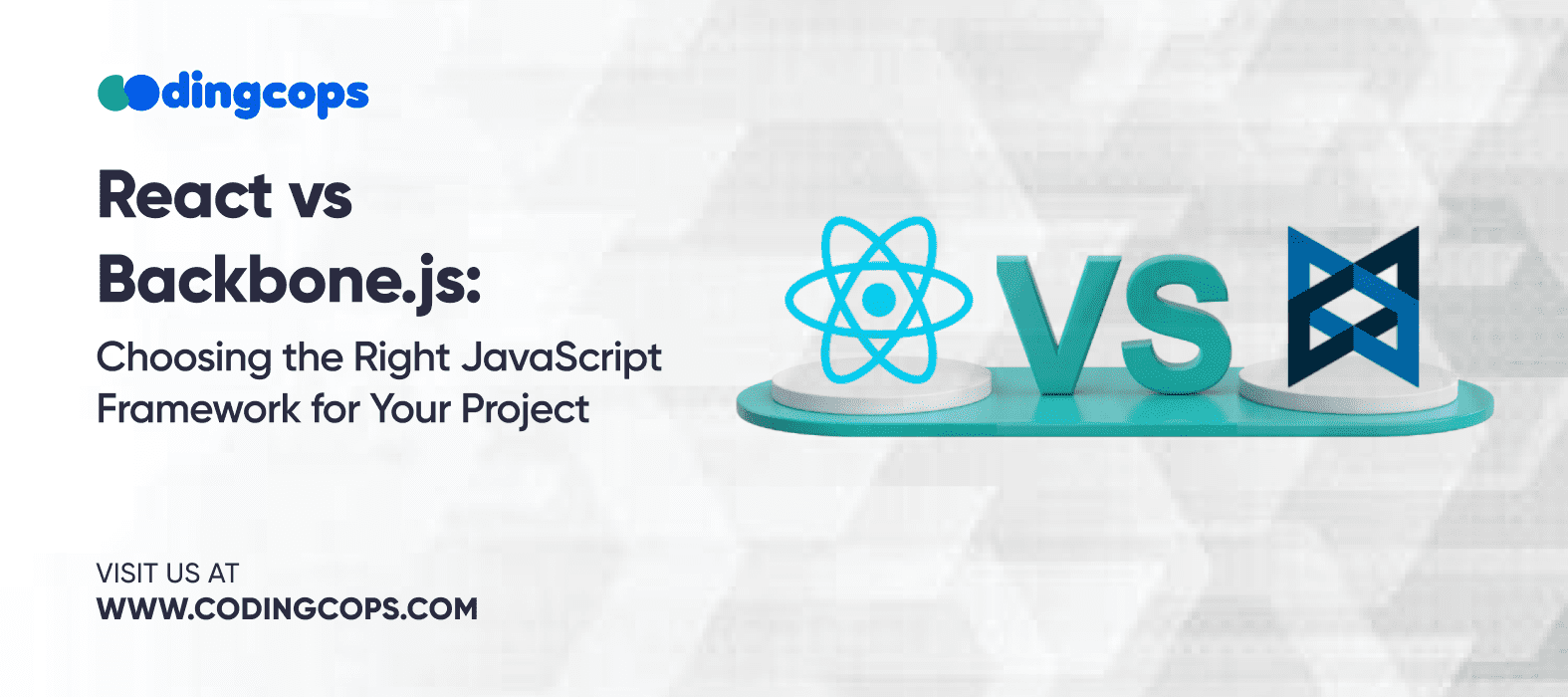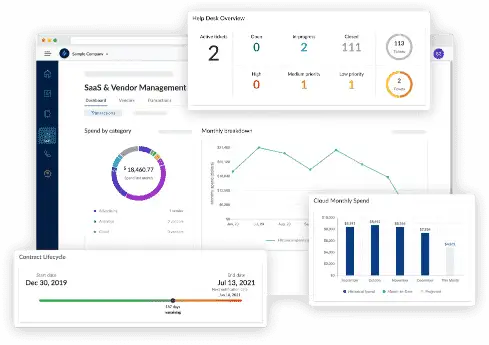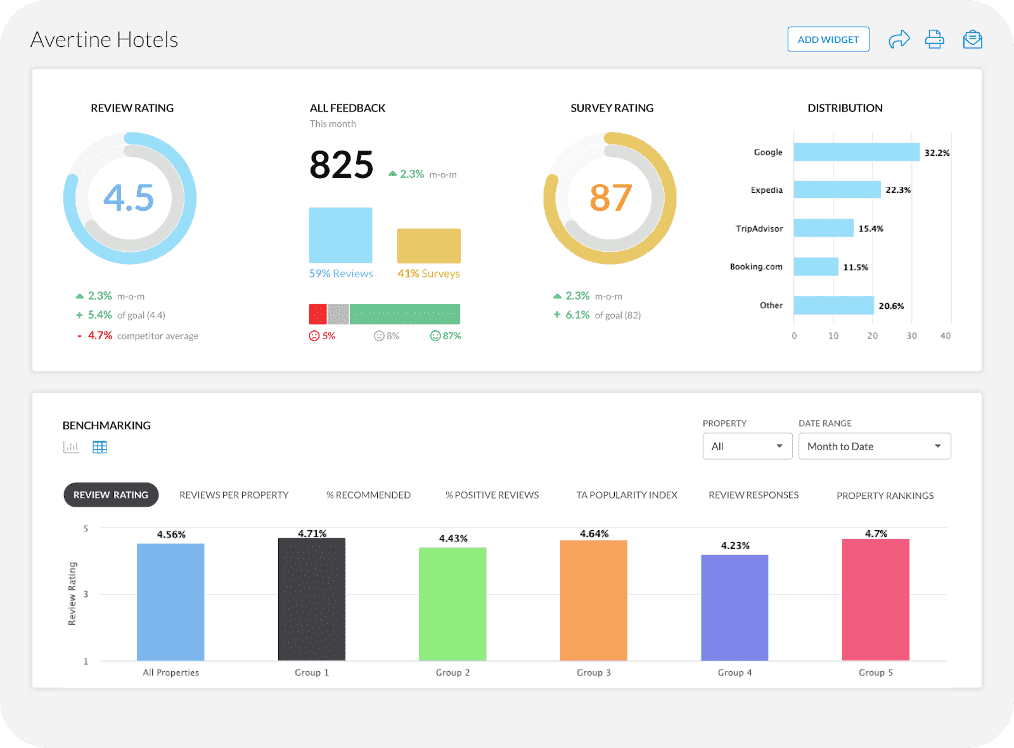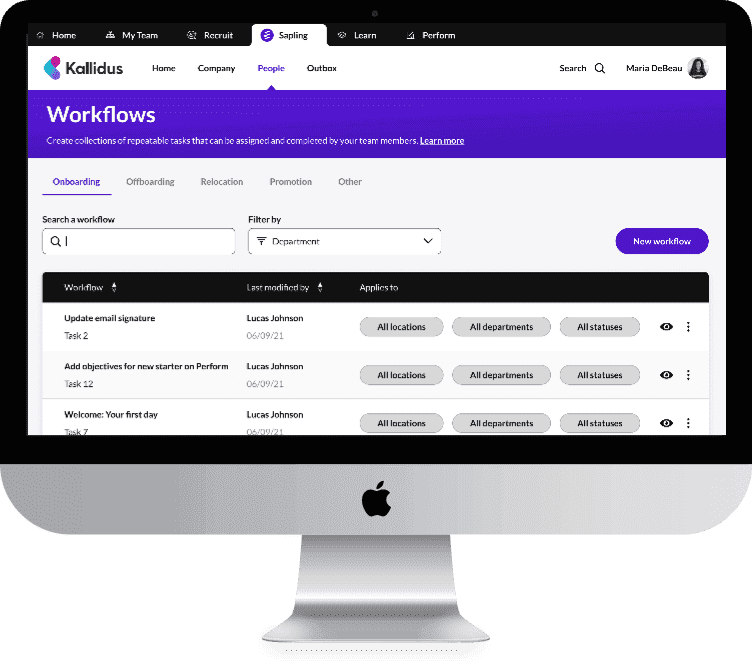Selecting the right JavaScript framework or library for your particular project is not an easy task as there are so many today. Among these, React and Backbone.js stand out for their unique strengths and functionalities.
What is React?

React is an open-source JavaScript library maintained by Facebook; it is primarily used for creating UI, particularly for single-page applications in which rapid response is important.
Features
- React is built around the concept of reusable components that manage their own state, and then compose them to make complex UIs.
- React uses a virtual DOM (Document Object Model) that minimally updates the HTML DOM, improving the performance and speed of web applications.
- An XML/HTML-like syntax used by React that extends ECMAScript so that XML/HTML-like text can co-exist with JavaScript/React code.
Advantages
- The use of Virtual DOM allows React to efficiently update the view in a web application by re-rendering only the components that change.
- Due to its popularity, React has a vast community and a large ecosystem of tools and libraries.
- Being backed by Facebook, React enjoys powerful corporate support, continuous development, and widespread adoption.
Disadvantages
- Despite being less complex than some other frameworks, learning React and JSX can be overwhelming for beginners.
- React is highly dependent on JavaScript; hence its dependence on HTML and CSS can be quite a shift from the norm for different developers.
What is Backbone.js
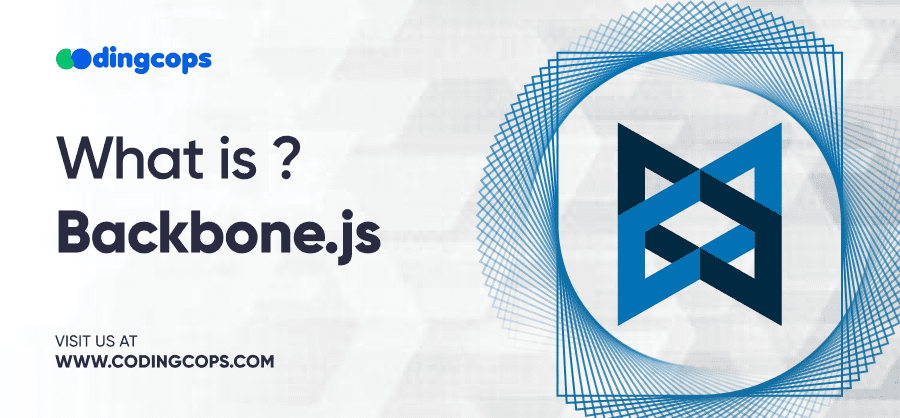
Backbone.js is a lightweight JavaScript library that aims to add structure to web applications by providing models with key-value binding and custom events, collections with a rich API of enumerable functions, views with declarative event handling, and connects it all to your existing API over a RESTful JSON interface.
Features
- At its core, Backbone.js is minimalistic, providing just the bare essentials to structure a web application.
- Backbone models fire events when one of their attributes changes; this is convenient for relaying information within the app without an overload of calls back.
- Backbone is created specifically for easy use in tandem with RESTful JSON, allowing for easy implementation of the synchronization of the models’ state with activities occurring on the server.
Advantages
- Backbone is straightforward to understand and flexible enough to integrate with various other technologies and frameworks.
- It allows direct commanding and precise control of the business flow and data processing, something that experienced developers often prefer using the terminology of the framework.
Disadvantages
- You might end up writing more boilerplate code to achieve functionality that other frameworks or libraries might provide out of the box.
- Flexibility can be a disadvantage as well since more architectural decisions remain in the hands of a developer thus resulting in code bases that can differ in different teams of developers if all of them use the framework.
React vs. Backbone.js
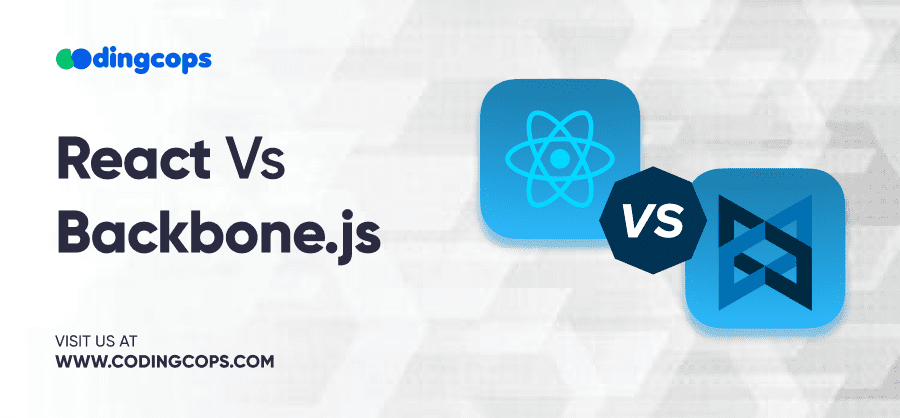
Architecture
React
React’s architecture revolves around components. These components are modular, independent units of behavior, rendering, and state. It’s also easier to handle complicated interfaces, as each of the elements can be created and fixed in isolation from the others.
Backbone.js
Backbone follows the traditional MVC architecture. The Model represents the data, the View displays the data (and sends user actions to the Controller), and the Controller changes data/state, completing the user interaction cycle.
Learning Curve
React
Learning JSX, a syntax extension that allows HTML-like syntax within JavaScript, is essential. Understanding the Virtual DOM concept and how React updates the DOM can also be challenging for beginners.
Backbone.js
With less abstraction than React, Backbone.js offers a straightforward way to understand web application structuring, which can be easier for those with basic JavaScript knowledge. Backbone’s minimalist nature means there’s less tooling involved, which can ease the initial learning phase.
Community and Ecosystem
React
Supported by Facebook and a massive community, React has a rich ecosystem of libraries, tutorials, and resources. People within the community can be a valuable source of help in finding solutions and identifying valuable practices.
Backbone.js
While Backbone.js has been around longer, its community is not as active as React’s. However, it has a rather mature set of patterns and practices in place.
Use Cases
React
React is ideal for dynamic applications where the user interface needs to update frequently and smoothly without reloading the page. Projects that require a high level of user interaction and immediate responsiveness benefit from React’s efficient rendering capabilities.
Backbone.js
Backbone.js is well-suited for applications that do not require complex user interfaces or extensive front-end capabilities. This provides more control over the program structure and its behavior and is useful where specific solutions tailored to the project are needed.
Dependency Management
React
React’s hooks and context provide internal mechanisms for managing state, but larger applications often use libraries like Redux or MobX, which add another layer of complexity and dependency.
Backbone.js
It integrates directly with jQuery and Underscore.js (often included as a part of Backbone), which simplifies dependencies but may require manual handling of more complex state dynamics or side effects.
Integration Flexibility
React
React can be integrated into any part of a web application (even on the server side with Node.js) and works well within a microservices architecture or alongside other libraries and UI frameworks.
Backbone.js
Less isolation between MVC components. This could however be a disadvantage in terms of encapsulation but it offers the models, views, and controllers the freedom and flexibility for interaction with other APIs or libraries.
Conclusion
Both React and Backbone.js have their merits and are suited to different types of projects. If you require a strong toolkit together with a large number of capabilities, pick React. However, if you’re working on a smaller-scale project or need a simple, flexible structure without much overhead, Backbone.js could be the ideal choice.

